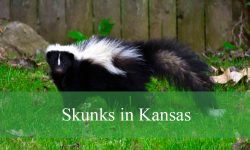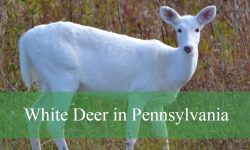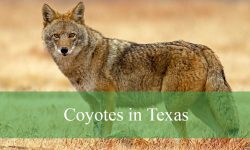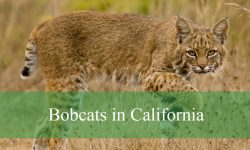The wild landscapes of Idaho are home to two of North America’s most iconic animals, the mighty moose and the elusive wolf. When these two giants of the wilderness cross paths, nature’s drama unfolds in ways that are both fascinating and brutal. From predator-prey dynamics to population balance and behavioral adaptations, their encounters reveal the intricate balance that keeps Idaho’s ecosystem alive.
In this article, we’ll explore what really happens when moose meet wolves in Idaho, from their interactions and survival strategies to how scientists study and manage this delicate relationship.
The Wilderness of Idaho: Where Moose and Wolves Coexist
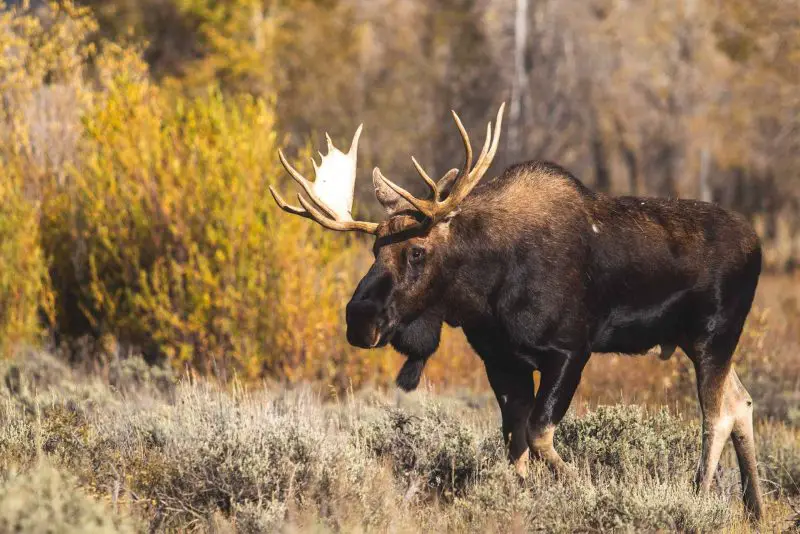
Idaho’s vast wilderness, stretching from dense conifer forests to rugged mountain valleys, provides the perfect setting for both moose and wolves. These two species have coexisted here for centuries, their interactions shaped by the availability of food, harsh winters, and territorial instincts.
Moose thrive in Idaho’s wetlands and riparian zones, feeding on aquatic plants, shrubs, and willows. Meanwhile, wolves roam the surrounding forests and mountain ranges, hunting in packs and maintaining territories that can span hundreds of square miles. Inevitably, their paths cross, often with deadly consequences for one side.
But these encounters are not just about survival. They also tell the story of how predator-prey relationships maintain ecological balance, influence animal behavior, and even affect plant growth in the region.
Understanding Moose Behavior in Idaho
Moose are the largest members of the deer family, standing over six feet tall at the shoulder and weighing up to 1,200 pounds. Despite their imposing size, they are surprisingly solitary and prefer areas with dense vegetation and access to water.
In Idaho, moose populations are primarily found in the Panhandle, central mountains, and the Salmon River region. They are well adapted to cold climates, using their thick coats and long legs to move through deep snow and wetlands.
During most of the year, moose are calm browsers, feeding on leaves, twigs, and aquatic plants. However, their behavior shifts dramatically during the rutting season in late September and October and the calving season from late May to June. These are also times when they are most vulnerable to wolf encounters.
The Return of Wolves to Idaho
For nearly 70 years, wolves were absent from Idaho after being eradicated in the early 20th century. However, in the mid-1990s, the gray wolf (Canis lupus) was reintroduced as part of a federal recovery program. Since then, the wolf population has rebounded, and Idaho now supports one of the largest wolf populations in the Lower 48 states.
This resurgence has reignited old tensions, both ecological and political, as wolves reestablished their role as top predators. For moose, this meant facing a formidable hunter once again.
While wolves primarily target elk and deer, moose can also become prey, particularly calves or weakened adults. This predator-prey relationship plays a crucial role in shaping moose population dynamics across Idaho.
When Moose and Wolves Meet: The First Encounter
When wolves encounter a moose, the outcome depends on numerous factors such as the number of wolves, the moose’s age and health, snow conditions, and the surrounding terrain. Wolves are opportunistic hunters that rely on teamwork and endurance rather than speed or strength.
A single wolf rarely attacks a healthy adult moose. But a pack of five to eight wolves can coordinate an ambush that tests the moose’s strength and stamina. The chase often begins with wolves testing their prey, circling, nipping at the hind legs, and forcing the moose to run or stand its ground.
If the snow is deep or the moose is weakened from age or injury, wolves gain the upper hand. However, many encounters end without a kill, especially if the moose is healthy and determined. Adult bulls can deliver lethal kicks that break bones, and their antlers can gore a wolf with a single thrust.
The Wolf’s Strategy: Pack Hunting Tactics
Wolves are intelligent and highly social predators. When hunting moose, they use coordinated tactics that reflect both experience and instinct.
- Scouting and Testing
Wolves often follow a moose’s trail for hours or even days, looking for signs of weakness. They may test their target with short chases to see how quickly it tires. - Team Coordination
The pack spreads out to cut off escape routes. Some wolves distract the moose from the front while others attack from behind. - Energy Efficiency
Wolves are built for endurance, not speed. They use terrain and weather to their advantage, especially in deep snow where a moose’s large body sinks more easily. - The Final Strike
Once the moose collapses or slows down, wolves close in for the kill, aiming for the throat or flanks to cause rapid blood loss.
While brutal, this method ensures that wolves expend the least energy possible, essential for survival during Idaho’s harsh winters.
The Moose’s Defense: Strength and Strategy
Moose may seem like easy prey, but they are among the most dangerous animals wolves can hunt. A cornered adult moose will stand its ground, lower its head, and charge with devastating force. Its long legs allow it to kick in any direction, and its sharp hooves can easily crush a wolf’s skull.
In thick forests, moose often use trees as natural shields, preventing wolves from circling. Mothers defending calves are especially fierce, sometimes killing wolves outright to protect their young.
Interestingly, moose in regions with wolf populations show heightened vigilance, scanning their surroundings more frequently and staying near dense cover or shallow water where they can better defend themselves.
Predation on Moose Calves
Newborn moose calves are particularly vulnerable during their first few weeks of life. They rely heavily on their mothers for protection and are easy targets for wolves, bears, and even coyotes.
Research in Idaho shows that wolf predation is one of the leading causes of calf mortality, especially in areas with high wolf densities. Packs often target calving grounds, tracking the scent of newborns. Despite the mother’s best efforts, many calves don’t survive their first month.
However, these losses are part of the natural balance. Predation helps regulate moose populations, preventing overbrowsing and ensuring healthy vegetation in riparian ecosystems.
Seasonal Factors in Moose-Wolf Interactions
The timing and frequency of moose-wolf encounters change with the seasons in Idaho’s rugged climate.
Winter: Deep snow slows down moose and makes them more vulnerable to wolf attacks. Packs often follow snowshoe trails made by moose to conserve energy.
Spring: Calving season brings a surge in predation as wolves target newborns.
Summer: Wolves rely more on smaller prey and scavenging, while moose retreat to wetlands to escape heat and insects.
Autumn: During the rut, bull moose are distracted by mating battles, making them less cautious and easier for wolves to approach.
These seasonal rhythms create a dynamic and ever-shifting relationship between predator and prey.
Population Dynamics: How Wolves Shape Moose Numbers
Wolves play an important ecological role by keeping moose populations in check. Without predators, moose numbers can rise rapidly, leading to overgrazing of willows and aquatic plants. This, in turn, impacts songbirds, beavers, and other species dependent on those habitats.
Studies in Idaho and neighboring states have shown that areas with healthy wolf populations tend to have fewer but healthier moose, as predation removes the sick and weak individuals. This natural selection promotes genetic strength and stabilizes ecosystems over time.
Still, wolf predation can spark debates among hunters and wildlife managers, especially when moose numbers decline below sustainable levels for hunting.
The Human Perspective: Conflict and Conservation
The return of wolves to Idaho has been one of the most controversial wildlife stories in recent decades. Many ranchers and hunters argue that wolves threaten livestock and game species like elk and moose. Others see them as essential to restoring natural balance.
The Idaho Department of Fish and Game (IDFG) manages both wolf and moose populations carefully, using hunting quotas and monitoring programs to maintain equilibrium. For example, regulated wolf hunting seasons aim to reduce pack sizes in areas where predation pressures are high.
At the same time, conservationists emphasize that both species are vital to Idaho’s wilderness identity. Their interactions remind us that true wilderness is not just about beauty, but about balance, conflict, and coexistence.
Scientific Studies and Tracking Efforts
Researchers in Idaho use GPS collars and motion-triggered cameras to study moose-wolf interactions in real time. These technologies provide valuable insights into how often encounters occur, which habitats are most risky, and how climate change may alter behavior.
For example, a long-term study near the Clearwater Basin revealed that wolves tend to focus on moose more heavily during harsh winters when elk populations are low. Data also show that moose alter their movement patterns, avoiding certain valleys known for frequent wolf activity.
This ongoing research helps wildlife managers make science-based decisions about habitat conservation and predator control.
Environmental Factors That Influence Encounters
Several environmental variables determine how frequently moose and wolves cross paths:
- Snow Depth: Deep snow limits moose mobility and gives wolves a major advantage.
- Habitat Fragmentation: Logging and human development can force moose into open areas, increasing vulnerability.
- Climate Change: Warmer winters and changing vegetation patterns are reshaping predator-prey dynamics.
- Prey Availability: When elk numbers drop, wolves are more likely to target moose.
Understanding these factors helps predict future trends and develop adaptive management strategies.
How Wolves Affect Moose Behavior Over Time
Over generations, moose populations living with wolves develop behavioral adaptations that increase survival rates. This process, known as predator-induced behavioral change, can influence everything from feeding habits to movement patterns.
Moose in wolf-dense regions tend to move more frequently to avoid detection, use denser vegetation for cover, spend less time in open feeding areas, and calve in more secluded locations.
These adaptations highlight how deeply predator presence can shape prey evolution, not just population size.
Observing Moose and Wolves in the Wild
For wildlife enthusiasts, Idaho offers some of the best opportunities to witness these magnificent creatures, though actual encounters between wolves and moose are rare to see in person.
The best areas to observe them include the Selkirk Mountains, Sawtooth Range, and Clearwater National Forest. Early morning or dusk are prime times for sightings. Always observe from a distance using binoculars, and never interfere with wildlife behavior.
Respecting their space ensures these animals can continue their natural interactions without human disruption.
Fun Facts About Moose and Wolves in Idaho
- Moose can run up to 35 mph despite their size.
- A wolf pack can consume an entire moose carcass in just two days.
- Moose have poor eyesight but excellent hearing and smell.
- Wolves can travel over 20 miles in a single night while hunting.
- Calves can stand and walk within hours of birth.
These fascinating facts remind us how evolution has fine-tuned both species for survival in Idaho’s wild frontier.
The Ecological Ripple Effect
The relationship between wolves and moose doesn’t just affect their populations, it cascades throughout the ecosystem. When wolves reduce moose numbers, vegetation recovers, benefiting beavers, birds, and insects. This is known as a trophic cascade, where predators indirectly shape entire habitats.
In areas without wolves, moose can overbrowse young willows and aspen, reducing biodiversity. So while wolf predation may seem harsh, it’s a vital force maintaining Idaho’s ecological health.
What the Future Holds
As climate patterns shift and human development expands, the future of Idaho’s moose and wolves will depend on careful management. Balancing ecological integrity with human interests remains a complex challenge.
The continued study of their interactions will be key to ensuring that Idaho’s wilderness remains both wild and sustainable. Whether through adaptive hunting regulations, habitat preservation, or public education, the goal is coexistence rooted in respect for nature’s design.
FAQs About Moose and Wolves in Idaho
Are wolves the main predators of moose in Idaho?
Yes, wolves are the primary natural predators of moose in Idaho, especially targeting calves and weakened adults. Bears and mountain lions may also prey on calves, but wolves have the greatest overall impact.
Do wolves threaten Idaho’s moose population?
Not significantly. While local declines can occur, overall wolf predation helps maintain healthy moose populations by removing sick or weak individuals and preventing overpopulation.
How often do wolves hunt moose?
Wolf packs may hunt moose several times a month, depending on prey availability and season. During harsh winters, moose make up a larger portion of their diet.
Can a moose kill a wolf?
Yes, adult moose can and do kill wolves during defensive encounters. Their powerful kicks and antlers make them formidable opponents.
Where can I see moose and wolves in Idaho?
Some of the best regions include the Panhandle National Forest, Sawtooth National Recreation Area, and Clearwater Basin, always from a respectful distance.
Final Thoughts
When moose and wolves meet in Idaho’s wild landscapes, it’s more than a simple predator-prey encounter. It’s a living demonstration of nature’s balance, strength versus strategy, endurance versus teamwork. Each encounter, whether a failed chase or a successful hunt, echoes the timeless rhythm of life and death that defines the wilderness.
Understanding this relationship helps us appreciate not only the resilience of these magnificent animals but also the intricate web of life that connects them, and us, to Idaho’s untamed heart.

